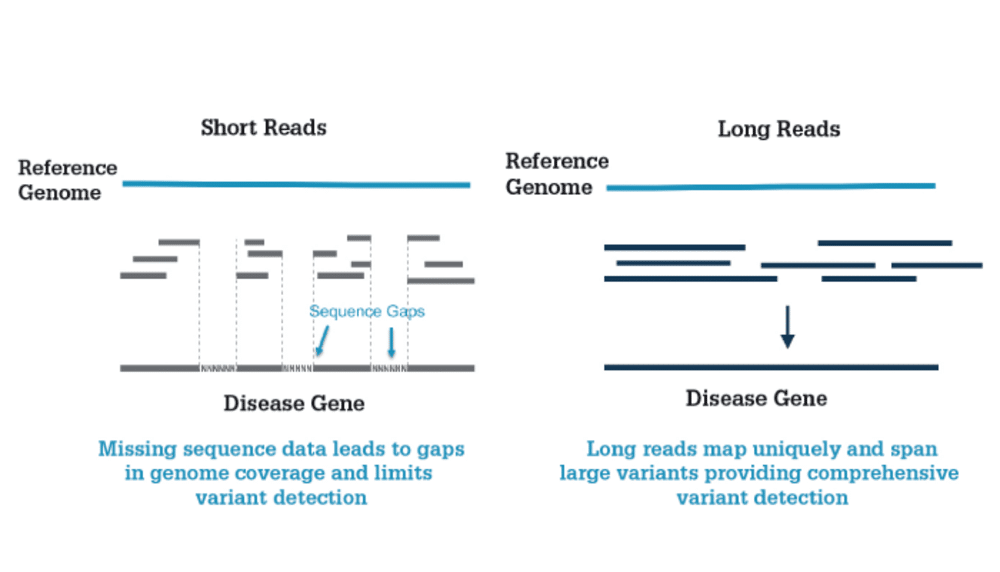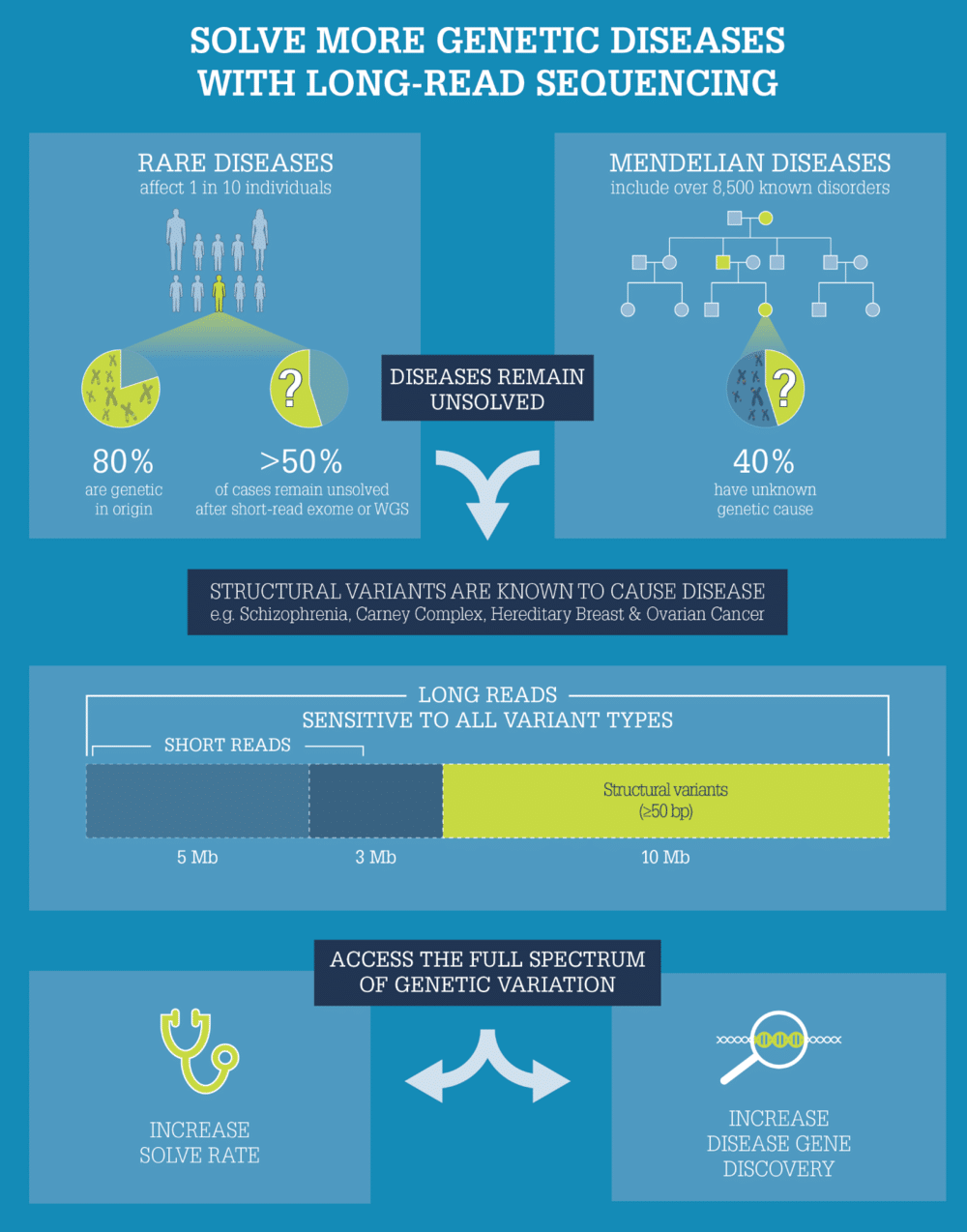The strides scientists have made in rare disease research lately is truly impressive. For an overview of recent progress, we encourage you to check out a new article in The Pathologist from our own Luke Hickey (@Luke_Hickey), Senior Director of Strategic Marketing. It offers a great overview of how scientists have used long-read sequencing to find the genetic explanations for elusive rare diseases.
“Never before have our laboratory techniques been so successful at identifying rare diseases and elucidating their underlying biological causes,” Hickey writes. “The knowledge we obtain today opens the door to new treatments, giving hope to people who suffer from these rare disorders.”
The educational article offers a look at how various types of sequencing have been important for solving rare diseases, including an overview of the types of variants that can be accessed by short-read platforms (typically limited to single nucleotide variants and small indels) or by long-read SMRT Sequencing (all structural variants, even very long elements such as repeat expansions).

Despite recent progress, at least half of known rare disease cases have not been solved with short-read sequencing or older techniques. That’s why so many scientists are now embracing SMRT Sequencing as a new application in the field, with early successes showing the tremendous promise of this approach. “In just the past few years, researchers have used SMRT whole genome sequencing to solve previously intractable rare diseases — and other significant efforts are now underway,” Hickey writes.
The article recaps some of those successes, such as Euan Ashley’s (@eaunashley) Carney complex work and Naomichi Matsumoto’s pathogenic deletion in cases of myoclonic epilepsy. It also provides a look at some large-scale efforts applying PacBio sequencing to rare disease studies, including SOLVE-RD and CSER.
“Large-scale programs like these should contribute a significant amount of new knowledge about the genetic mechanisms underlying rare disease, filling in many of the gaps in our understanding today,” Hickey concludes. As SMRT Sequencing “helps to explain more rare diseases and increase overall diagnostic yield, it should have a profound effect on our ability to diagnose, understand, and ultimately improve treatment for rare disease cases.”
To hear the latest in rare disease research, register to watch our on-demand webinar: Increasing Solve Rates for Rare and Mendelian Diseases with Long-read Sequencing.

May 11, 2020 | Rare disease